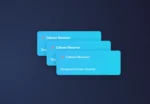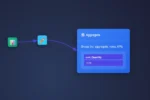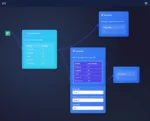
by tyler garrett | Jun 30, 2025 | Data Visual
Predicting future trends has long captivated human imagination—from ancient astronomers mapping celestial paths to today’s financial experts forecasting markets. Yet, while accurate time series forecasting is critical, communicating these predictions comprehensively through visualization is equally essential. Businesses drowning in data often lack clarity, preventing decision-makers from turning insights into strategic actions. As we collectively harness the power of forecasted analytics, turning intricate data sets into understandable, visually engaging presentations becomes a strategic advantage. Here, we explore why effective visualization matters for time series forecasting and share best practices for transforming complex predictions into visually compelling and actionable insights.
Why Visualization Matters in Time Series Forecasting
Time series forecasting isn’t merely about generating predictive algorithms. It’s equally important that these forecasted insights are digestible, actionable, and comprehensible by stakeholders across all organization layers. Without effective visualization, even the most sophisticated predictive models remain inaccessible, weakening their strategic impact. Great visualizations allow for quicker, more intuitive interpretation of complex predictions. They uncover hidden patterns, expose potential risks, and vividly illustrate trends that might otherwise remain unnoticed. Leaders don’t have the luxury of sifting through raw numeric outcomes—they need insights fast, confidently, and clearly.
Visualization significantly enhances data storytelling capabilities. It helps bridge gaps between technical experts who develop models and stakeholders responsible for strategic decisions, fostering open dialogue and ensuring alignment. Additionally, robust visualization supports transparency and accountability, an increasingly vital aspect amidst growing debates about the finance industry’s reliance on data.
Moreover, intuitive visualization scenarios empower teams across all departments to participate actively in analytics-driven decisions. Turning complex predictions into visuals not only democratizes data-driven decision-making but ensures that critical insights don’t remain hidden or misunderstood.
Essentials of Effective Time Series Visualization
Crafting visualizations for forecasting involves more than plotting data points and trend lines. Effective time series visualization demands strategic thinking, clear storytelling, and a nuanced understanding of visual encoding principles. One foundational aspect of effective visualization involves selecting the right visual encoding channels. According to principles we’ve outlined previously in our analysis of visual encoding channels effectiveness hierarchy, visuals must precisely convey the intended data relationships and trends clearly and intuitively.
Another critical element involves highlighting uncertainty clearly and transparently. Uncertainty visualization helps stakeholders understand the forecast’s confidence levels and buffer their strategic decisions accordingly. Techniques like shaded regions, confidence intervals, or uncertainty cones add nuance without overwhelming the viewer. An effective visualization strategy doesn’t shy away from uncertainty; it communicates it explicitly, bridging analytical reality with leadership expectations.
Likewise, temporal context is crucial. Clearly identifying major events or changes within your forecast timeline boosts comprehension and explanatory power. Strategic annotation and well-tailored labeling provide visual context that enriches the viewer’s experience, reducing ambiguity and enhancing clarity—especially important across competitive sectors with large volumes of interwoven data sets.
Interactive Visualization—Moving Beyond Static Representations
Static visualizations have historically been the norm; however, today’s leaders demand more dynamic data representation. Interactive visualization moves beyond mere static images, permitting users to explore data actively, hover for additional details, zoom into specific predictions, or filter by relevant dimensions. Applying advanced filtering techniques, such as those we’ve explored thoroughly in our guide on effectively leveraging the SQL BETWEEN operator, further improves your visualization’s accessibility and ease of use.
Implementing interactive visualizations is beneficial for teams needing layers of insights from the same data source. Interactive visuals encourage exploration, discovery, and active intellectual engagement, unlike passive viewing experiences. Real-time data manipulation also assists decision-makers in generating personalized actionable insights, significantly improving overall analytical coherence across the entire organization.
Furthermore, interactivity promotes transparency and openness, allowing analysts to illustrate precisely how different assumptions or parameters influence forecasts. This level of openness enriches corporate discussions and decision-making processes, making your forecasting efforts understandable and strategic. Interactive dashboards empower executives with the versatility normally afforded only to technical experts and data analysts, democratizing analytics use and fueling better decisions.
Innovative Visualization Approaches to Boost Time-Series Comprehension
Visualization innovations increasingly push the boundaries of perception, comprehension, and predictability mastery. Embracing powerful next-gen methods like semantic embeddings elevates visualizations so that they’re meaningful and aligned with business narratives. In our recent exploration of semantic embeddings for business intelligence, we’ve learned that employing semantic relationships can revolutionize how executives perceive and understand predictive visuals.
Another exciting visualization innovation involves geo-temporal visualizations, such as cartograms that transform spatial projections to vividly represent prediction impacts geographically. As demonstrated in our article outlining cartogram implementations for geospatial data distortion, reshaping map visualizations makes geospatial forecasts clearer, richer, and immensely impactful across territories and markets.
Additionally, leveraging differentiable data structures, a cutting-edge analytics concept we’ve addressed in depth in our recent examination of ML-enhanced analytics, supports the flexibility and adaptability of advanced visualization techniques. Innovations like these don’t just simplify data—they strategically ensure the right insight reaches the right stakeholder precisely at the decision-making moment.
Aligning Your Visualizations with Technical Data Management Frameworks
Powerful forecasting visualizations must align harmoniously with robust metadata management practices and business glossaries. Visualization strategies unsupported by effective data governance and metadata management often lead to confusion, inefficiency, or misinterpretation. Developing visualizations demands understanding the technical undercurrent beneath prediction data points—elements extensively covered in our comprehensive overview of technical metadata management.
Moreover, integrating forecasting visualizations seamlessly with existing business glossary standards is equally beneficial. Aligning technical and business metadata leads to enhanced enterprise-wide understanding, enabling organizational alignment toward strategic business objectives. To achieve such alignment, businesses typically rely on best practices around business glossary integration with technical metadata, cultivating a coherent and powerful forecasting visualization experience.
Maintaining alignment between visualizations and technical metadata isn’t purely technical—it’s also fundamentally strategic. It reassures stakeholders your visualizations accurately and meaningfully portray validated analytical insights, raising organizational confidence, reliability, and ultimately, strategic efficiency. Aligning these data management strategies with your forecasting visualizations will elevate your business insights into actionable intelligence that resonates across audiences.
AI and Automated Visualization Strategies—Optimizing For the Future
Artificial intelligence (AI) techniques have revolutionized forecasting visualization by automating visual generation, identifying essential predictive insights, and surfacing hidden correlational patterns effectively. Embedding AI across visualization creation workflows proves substantially beneficial, significantly minimizing manual labor dedicated to plot adjustments, adjustments often requiring considerable manual interventions previously. In fact, exploring these advancements aligns seamlessly with the insights provided in our exploration of the impact of AI on data engineering workflows.
Automated systems intelligently suggest best visualization elements appropriate for forecast data—coloring decisions, forecasting intervals, clear pattern highlights—speeding dashboard deployment massively. By leveraging AI-driven visualization strategies, businesses reduce guessing or repetitive tasks, redirecting valuable human talent toward strategic problems requiring creativity, ingenuity, and expert judgment.
AI-enhanced visualizations also respond dynamically as new data flows in. These timely visuals enable companies to quickly respond to market shifts and make agile strategic decisions confidently. Growing AI integration, coupled with innovative approaches to visual construction, ensures that the continually evolving analytical aspects of forecasting visualizations remain strategically relevant—solidifying strategic advantages and enabling organizations to stay ahead in an increasingly expedited business environment.
Conclusion—Clarifying the Future through Forecast Visualization
Transforming time series forecasting into powerful visualizations empowers businesses immeasurably—enhancing strategic clarity and ensuring analytic efforts directly generate actionable insights. At our consultancy, we consistently integrate innovative visualization strategies with robust analytics methodologies, delivering tangible value seamlessly. Consider exploring our advanced analytics consulting services to appreciate the actualization possibilities visualization brings.
Thank you for your support, follow DEV3LOPCOM, LLC on LinkedIn and YouTube.

by tyler garrett | Jun 30, 2025 | Data Visual
Imagine visualizing the invisible, tracing the paths of transactions that ripple across global networks instantly and securely. Blockchain transaction visualization unlocks this capability, transforming abstract data flows into clear, navigable visual stories. Decision-makers today face an urgent need to understand blockchain activity to capture value, enhance regulatory compliance, and make strategic decisions confidently. By effectively mapping distributed ledger transactions, businesses can gain unprecedented transparency into their operations and enjoy richer analytic insights—turning cryptic ledger entries into vibrant opportunities for innovation.
Understanding Blockchain Transactions: Insights Beyond the Ledger
Blockchain technology, known for its decentralized and tamper-resistant properties, carries tremendous potential for transparency. Each blockchain transaction is a cryptographically secure event stored permanently across multiple distributed nodes, building an immutable ledger. Yet the inherent complexity of transactions and the vast scale of ledger data present substantial challenges when extracting meaningful insights rapidly. Here, visualization emerges as an essential approach to simplify and clarify blockchain insights for strategic understanding.
By leveraging effective visualization techniques, stakeholders can examine intricate transaction relationships, pinpoint high-value exchanges, and uncover patterns indicative of market behaviors or fraudulent activities. When decision-makers grasp the flow of resources through intuitive visual interfaces, it elevates their strategic decision-making ability exponentially. Using innovative analytical tools and methodologies specifically designed for blockchain, businesses can quickly transform distributed ledger complexity into actionable intelligence, thus generating concrete business value from distributed insights.
At Dev3lop, our expertise in Node.js consulting services helps integrate robust visualization systems seamlessly into cutting-edge blockchain analytics workflows, enhancing the speed and precision of strategic decision-making across your organization.
Choosing the Right Visualization Techniques for Blockchain Data
Not every visualization approach works effectively for blockchain data. Optimal visualization demands understanding the specific nature and purpose of the data you’re analyzing. Transaction maps, heat maps, Sankey diagrams, network graphs, and even contour plot visuals—like the ones we’ve explained in our blog on contour plotting techniques for continuous variable domains—offer tremendous analytical power. Network graphs illustrate complex relationships among addresses, wallets, and smart contracts, allowing analysts to recognize influential nodes and assess transactional risk accurately.
Sankey diagrams, in particular, can visualize resource movements across crypto platforms clearly, allowing stakeholders to instantly grasp inflows and outflows at multiple addresses or distinguish between factors influencing wallet activities. Heat maps enable stakeholders to detect areas of high blockchain usage frequency, easily identifying geographic or temporal transaction trends. Creating the right visualization structure demands strategic thought: are stakeholders most interested in confirming transaction authenticity, systematic fraud detection, monitoring compliance adherence, or understanding market dynamics?
The strategic alignment with visualization type and analytics goal becomes pivotal. For organizations managing constrained data resources, our blog post about prioritizing analytics projects with limited budgets provides valuable strategic guidance to ensure investments align powerfully with organizational outcomes.
Enhancing Fraud Detection and Security through Visual Analytics
Security and fraud prevention rank as top priorities for blockchain users, particularly for enterprises integrating distributed ledger technology into critical business processes. Transaction visualization significantly strengthens the effectiveness of security measures. Identifying suspicious transactions quickly and easily through visual analysis reduces organizational risk and saves resources otherwise dedicated to manual investigative processes. Patterns and outliers revealed via visualization highlight transactions with unusual transfer volumes or repeated activity from suspicious sources clearly.
Furthermore, visual analytics tools powered by Node.js solutions can be implemented for tracking blockchain events in real-time, supported by platforms well-suited for processing large data streams. Adopting effective processing window strategies for streaming analytics, as described in our published insights, positions analytics teams to detect fraudulent irregularities rapidly in live transactional datasets.
Visualization also aids regulatory compliance by enabling comprehensive chain-of-custody insights into funds traveling across dispersed networks. Enterprises can track compliance adherence visually and share transparent reports instantly, dramatically improving trust and accountability across complex digital ecosystems.
Advanced Visualization Strategies: Real-Time Blockchain Monitoring
Real-time blockchain monitoring represents the future of strategic blockchain visualization within analytics frameworks. Decision-makers require immediate accuracy and clarity when evaluating distributed ledger activities, and advanced visualization methods make this possible. Real-time dashboards employing sophisticated data querying frameworks, like utilizing efficient SQL operators we detailed in efficient filtering of multiple values using the SQL IN operator, equip analysts with live transaction feeds represented visually. Instantaneous visualization helps businesses react quickly to dynamic market shifts or regulatory requirements.
Enabling real-time monitoring demands powerful, reliable infrastructure and streamlined data movement: as we’ve previously demonstrated by helping businesses send Sage API data to Google BigQuery, robust integration services provide stable platforms for scalable blockchain analytics. Engineers adept at big data analytics and cloud environments, outlined further in our article on hiring engineers focused on improving your data environment, bolster your analytics strategy by constructing streamlined analytics pipelines that instantly bring blockchain insights from decentralized nodes to decision-maker dashboards.
Navigating Global Complexity: Visualization at Scale
Blockchain systems inherently span multiple global locations, creating complexities inherent to distributed operations, transaction timing, and location-specific analytics needs. Decision-makers managing cross-border blockchain applications encounter issues in comparing and analyzing transaction timestamps consistently—a challenge we covered extensively in our post about handling time zones in global data processing.
Effective blockchain visualization reconciles these global complexities by offering intuitive visual representations, synchronizing time zones dynamically, and presenting coherent perspectives no matter how wide-ranging or globally dispersed the data may be. Platforms capable of intelligently aggregating data from geographically decentralized blockchain nodes enhance reliability, speed, and clarity, thereby minimizing confusion across global teams.
Seamless integration between visual analytics and global blockchain systems ensures businesses stay competitive in international arenas, confidently interpret cross-border ledger activities, and leverage blockchain data effectively in their strategic decision-making processes.
Leveraging Blockchain Visualization for Competitive Advantage
With sophisticated blockchain transaction visualization in place, organizations achieve unprecedented strategic clarity and operational insight—unlocking significant competitive advantages across marketplaces. Visualizing your distributed ledger data enhances forecasting accuracy, identifies customer segments clearly, and reveals new business opportunities. We’ve detailed similar strategies previously in our article illustrating how market basket analysis helps identify complementary products.
Visualization also serves as a powerful communication tool internally. Translating blockchain data into visually comprehensible insights, even non-technical executives quickly grasp previously obscure ledger trends. This boosts organizational agility, expedites data-driven responses, and helps organizations position themselves expertly for market leadership.
Strategic decision-making fueled by clear blockchain data visualizations drives lasting innovation, operational efficiency, and robust competitive performance. Leaders who embrace blockchain transaction visualization pledge their organization toward greater transparency, sustained innovation, and unwavering growth potential in an increasingly blockchain-centric economy.
From strategy definition through visualization execution at Dev3lop, our expertise bridges the gap between industry-defining analytics insight and blockchain’s transformative power, ensuring your organization leads confidently through a digitally decentralized future.
Thank you for your support, follow DEV3LOPCOM, LLC on LinkedIn and YouTube.

by tyler garrett | Jun 30, 2025 | Data Visual
Imagine harnessing streams of data generated continuously from millions of IoT sensors spread across cities, factories, farms, and even personal devices, and instantly visualizing this information in powerful, actionable dashboards. To realize this vision and fully capitalize on the massive value inherent in IoT-generated datasets, businesses need robust real-time data visualization architectures. At the intersection of analytics, innovation, and data-driven decision-making stands a strategic approach to real-time architecture patterns that empowers clarity, productivity, and agility for decision-makers. Let’s unpack essential architectural patterns and strategies for visualizing real-time IoT sensor data effectively, enabling you to stay ahead in this interconnected, data-centric world.
Understanding the Significance of Real-Time IoT Visualization
In industries ranging from smart manufacturing to agriculture, transportation, and biosensors in healthcare, IoT sensor data streams offer an unprecedented opportunity for leaders to observe, analyze, and act on operational insights instantly. Visualizing IoT sensor data streams in real-time doesn’t merely enhance the company’s analytical capabilities; it’s a strategic advantage empowering businesses to make proactive decisions, streamline processes, and significantly increase efficiency.
Real-time visualization architectures leverage advanced streaming and data ingestion technologies like Apache Kafka, MQTT brokers, and AWS Kinesis. These platforms capture immense amounts of sensor data immediately upon creation, reducing latency to milliseconds. Such low latency ensures stakeholders receive timely analysis that drives rapid, informed responses to dynamic conditions of the business landscape.
Additionally, embedding advanced visualization frameworks further amplifies the impact and utility of IoT data. Removing barriers between technical and non-technical users, visualization democratizes data insights across the organization. At Dev3lop, we’ve leveraged our AWS consulting services to help businesses implement scalable IoT visualization environments rapidly. This kind of data-aware strategy ensures agility and responsiveness in an increasingly competitive world.
Architectural Patterns for Real-Time IoT Data Visualization
Pattern 1: Event-Driven Streaming Architectures
An event-driven architecture forms the backbone of real-time IoT data visualization. It focuses on the generation and consumption of streaming events, structured messages signaling sensor status, errors, or thresholds passed. Technologies like Apache Kafka or AWS Kinesis function as stream processing hubs, enabling high-throughput and low-latency event handling capabilities.
This architecture pattern efficiently orchestrates device-generated events, allowing sophisticated, real-time analytics and visualization systems to continuously ingest, process, and visualize data as it streams. Data processing frameworks, such as Apache Flink or Apache Spark Streaming, analyze sensor-event data on-the-fly, ensuring that insights stay fresh. When combined with modern data visualization solutions such as Power BI dashboards, Tableau, or custom JavaScript libraries, businesses can effortlessly view real-time performance, anomalies, and trends.
Such an architecture guarantees accurate, timely insights, critical when decision-making speed is essential, such as in predictive maintenance scenarios—addressing problems before they become costly downtime.
Pattern 2: Microservices and API Gateways for Scalability and Flexibility
Scalability and flexibility are paramount as your IoT deployment grows in complexity. A microservices approach separates functionality into smaller, modular services, each focused on specific tasks, such as data ingestion, sensor data normalization, analytics, or visualization. API gateways orchestrate these microservices, providing clean interfaces and seamless scalability in response to fluctuating workloads.
This decentralized architectural style assists in isolating potential issues quickly, promotes platform independence, and allows teams to independently iterate and deploy services. Transitioning from legacy infrastructure or expensive drag-and-drop warehousing solutions to microservices based solutions with Node.js or other cost-effective platforms also unlocks substantial cost efficiency and greater agility.
Utilizing microservices promotes continuous development, testing, integration, and deployment cycles. By allowing teams the independence to innovate and specialize in services tailored exclusively to IoT visualization tasks, businesses reshape their operational agility, shorten development cycles, and rapidly introduce impactful visualization enhancements.
Pattern 3: Time-Series Databases and Real-Time Storage Engines
IoT sensor data is inherently time-series data—characterized by data values indexed over timestamps. Specialized storage solutions designed for high-speed ingestion and querying of time-series data, such as InfluxDB, TimescaleDB, and AWS Timestream, form crucial components of IoT visualization architectures.
These databases effectively compress, store, and index streaming IoT sensor data, enabling ultrafast queries for real-time dashboards. Enhanced query performance and improved infrastructure cost-efficiency make these technologies an obvious choice for modern IoT visualization architecture.
Such databases also contribute significantly to backward compatibility strategies for data processing and versioned analytics, an essential part of version-aware data processing best practices. For developers and analysts, their capacity to swiftly iterate visualization solutions depends heavily on quickly ingesting, querying, and displaying streaming IoT data in real-time.
Visualization Techniques Tailored for IoT Sensor Stream Analysis
Real-Time Dashboards for Operational Monitoring
Operational dashboards provide immediate, intuitive insights into IoT streaming sensor data, fostering swift decision-making across teams. Well-designed dashboards present concise, targeted metrics for alerting when operational thresholds or critical events occur, facilitating agile and proactive response.
Moreover, platforms capable of displaying sophisticated, interactive visualizations, such as dynamic charts, heatmaps, and custom visualizations offer advanced, granular insights. Advanced visualization techniques like D3.js or WebGL-based frameworks further enable interactive sensor network insights, exemplified by D3.js force simulations for interactive network visualizations.
When effectively developed, dashboards become mission-critical tools receiving regular streamlined updates through best practices like properly managed data integrations and SQL based strategies, such as our guide covering SQL INSERT INTO commands. Thus, ensuring real-time visualization accuracy and timeliness is exceptionally achievable.
Predictive Analytics and AI-driven Intelligent Visualizations
IoT visualization platforms become truly innovative when predictive analytics and machine learning algorithms are integrated. Techniques such as anomaly detection, pattern recognition, or maintenance predictions, provide foresight into sensor behavior, alert stakeholders to approaching risks, and optimize operational efficiencies.
Cloud-based AI/ML platforms hosted on systems such as AWS SageMaker or Azure ML seamlessly integrate with IoT visualization environments. Leveraging such platform offerings or tapping external expertise through robust AWS consulting services, teams can implement intelligent visualization capabilities rapidly and reliably. Integrating AI-powered reporting directly into visualization platforms bridges gaps between real-time insights and long-term proactive strategies across organizations.
Governance, Security, and Access Management
IoT data streams require excellent governance and security considerations to ensure secure, compliant operations—especially critical when visualizing data for broad organizational access. Clearly defining privilege grants and permissions, as discussed in our solutions guide to granting SQL privileges and permissions, is pivotal to managing and securing information from IoT sensors.
Comprehensive access controls, governance frameworks, appropriate encryption, and audit logging mechanisms must seamlessly integrate into visualization architectures. This ensures compliance with industry or regulatory standards to protect sensitive operational data. Leveraging modern, secure cloud services and establishing robust data governance reinforces trust in visualized IoT insights, empowering confident, secure decision-making processes across your organization’s hierarchy.
Building a Future-Ready Real-Time Visualization Infrastructure
Realizing business value from streaming IoT sensor data means building future-ready visualization architectures that embrace flexibility, scalability, and innovation. Selecting an effective architecture pattern and adopting strategic technology choices substantially impacts your organization’s ability to leverage data-driven decisions.
Our experience helping organizations understand modern data architecture paradigms, coupled with expertise in diverse solutions and platforms, ensures businesses build stronger analytics capabilities. And partnerships like our collaboration with educational institutions keep innovation flowing into the analytics industry.
Thank you for your support, follow DEV3LOPCOM, LLC on LinkedIn and YouTube.

by tyler garrett | Jun 30, 2025 | Data Visual
In today’s interconnected world, data visualization is more than just graphs, charts, and dashboards—it’s a universal language that bridges barriers and communicates complex insights across diverse cultural audiences. If your visualizations aren’t culturally attuned, even the most sophisticated analytics can be misunderstood or overlooked entirely. At the intersection of data, analytics, and innovation lies the art of cultural data design, a strategic approach that adapts visualizations to resonate effectively with global, multilingual audiences. When businesses understand cultural nuances, they tap into stronger emotional reactions and clearer interpretations, driving better decision-making and deeper stakeholder engagement. Cultural adaptation in data visualization is no longer optional—it’s critical for organizations seeking an international competitive advantage.
The Importance of Cultural Context in Data Visualization
Understanding data visualization beyond mere usability and aesthetics is essential, especially in an era defined by globalization. Effective visual storytelling requires acknowledging cultural context, which significantly shapes how visuals are interpreted by diverse audiences. Data visualizations that resonate positively in one cultural environment can easily lead to confusion or miscommunication in another due to differences in symbolism, color psychology, and layout interpretation. This is why cultural context must shape design strategies from the initial stages of developing your analytics platform—and why top-tier professionals consistently emphasize culture-aware visualizations as a strategic advantage.
For instance, consider the colors used in visual dashboards. In Western cultures, red signals danger or caution, whereas in certain Eastern cultures, it symbolizes prosperity and luck. A multinational enterprise leveraging tools like Tableau dashboards with Google Analytics integration might inadvertently communicate an unintended message unless cultural data design principles are consciously applied. Making culturally-cognizant design decisions eliminates these risks and emphasizes clarity, fostering a deeper understanding and quicker trust-building across different markets. Overall, integrating cultural contexts into your visualizations aligns your business intelligence practices with clarity, empathy, and inclusivity—essential for global reach.
Navigating Color and Symbolism: Designing Universal and Tailored Visualizations
Colors and symbols deeply influence user reactions and interpretations across cultures. Choosing visuals without understanding cultural symbolism can lead to misinterpretation and weaken the message you’re aiming to communicate. Empowering stakeholders with well-designed visuals demands meticulous attention to the symbolic weight of colors, shapes, and icons. For example, green represents financial gain in many Western contexts but may signify healthcare or fertility elsewhere. Similarly, religious symbols, LTR (left-to-right) alignment versus RTL (right-to-left), icons, or even specific visual metaphors can dramatically shift in meaning depending on the viewer’s background.
To navigate these complexities, designers and analysts must integrate thorough audience research driven by analytics. Leveraging tools such as cloud-based data warehouses with expertise from professional consultants specializing in Amazon Redshift consulting services, you can efficiently gather, store, and analyze feedback data on user responses from multiple geographic regions. Such analytics insights enable you to adapt visualizations that resonate deeply within each specific audience, pinpointing differences instantly and solving ambiguity proactively. By combining rigorous analytical insights with precise cultural research, analysts, and software strategists can create intuitive visuals tailored uniquely to your global audiences—ensuring your message aligns with clarity, accuracy, and intention across cultures.
Localization is More Than Translation: Data Storytelling Tailored for Global Audiences
Localization is typically associated with language capabilities—converting text and numbers into users’ native languages. Yet, proper localization of data visualization extends much further, encompassing the entire user experience. Localization must include adjustments of visual context, layout structures, date and numerical formats, cultural sensitivities, and communication styles. Simply translating text labels is insufficient when your dashboards involve nuanced concepts, ranging from schema architecture to streaming analytics. Ensuring schema handling is appropriate for every context and adapting data processes like schema evolution handling in data pipeline development enhances consistency across global visualizations.
Adopting a localization mindset shifts the focus from plain translation toward encoding cultural relevance directly into data visualization workflows. Ensuring user-friendly dashboards that respect cultural subtleties requires familiarity with reference data management systems architecture. Technical strategists skilled in cultural localization know the value in customizing dashboard elements, currency formats, number separators, and naming conventions, improving readability, reducing friction, and increasing adoption. Strong localization strategies acknowledge that presenting data dynamically and contextually improves visual communication and helps end users quickly absorb critical insights without stumbling on minor formatting obstacles. Empowered strategic localization places global stakeholders on equal footing for meaningful conversations around data-driven insights.
Ethical Considerations in Designing Cross-Cultural Data Visualizations
Creating visuals for diverse global audiences also involves addressing ethical standards and sensitivities. Organizations must ensure inclusive data designs prioritize both ethics and cultural understanding. Ethical considerations include avoiding stereotypes, respecting audience privacy, ensuring fair representation, and enabling transparency in data collection and interpretation. Embracing these ethical data principles produces visualizations that authentically represent diverse voices and perspectives without perpetuating harmful or biased narratives.
Strategies such as anonymizing personal identifiers or reshaping data collection paradigms according to cultural aspects contribute to more ethical and respectful cross-cultural outcomes. Employing practices from ethical software engineering frameworks for responsible data collection and analysis helps enterprises ensure their visualizations remain ethical, unbiased tools. It’s critical for software developers, designers, and analytics professionals to balance high-quality data analytics with respectful presentation techniques, ensuring ethical alignment with every visualization. Organizations that choose an ethical and culturally sensitive approach to their data visualizations genuinely exhibit social responsibility—not just to consumers, but also as trustworthy ambassadors on a global scale.
Technology and Tools: Selecting the Right Culturally Intelligent Solutions
Efficiently adapting visualizations for diverse cultures requires the right technological solutions and skillsets. Implementing powerful, cloud-first data solutions that allow seamless agility across localization and cultural adaptation processes is crucial. This might include platforms offering real-time analytics combined with reliable processing window strategies for streaming analytics, essential for adapting visuals dynamically based on live cultural feedback and changing user requirements. Robust, culturally intelligent technology stacks amplify the impact and adaptability of your dashboards.
Another key aspect is building inherent cultural awareness into your data teams’ capabilities—for example, advanced SQL expertise beyond traditional visualization tools. In fact, many analysts realize powerful cultural adaptation requires deeper data fluency than merely using familiar drag-and-drop visual frameworks. This deeper competency is demonstrated in articles such as you don’t necessarily need Tableau; you need to learn SQL—highlighting the strategic importance of technical depth. Cultivating technically proficient data teams who deeply understand cultural contexts not just enhances your visualization outputs, but also positions your analytics unit strategically for sustained international success. The right software solutions, supported with culturally-sensitive analysis skills, empower truly global data-driven decisions.
Continuous Improvement: Leveraging Feedback Loops for Culturally Responsive Visual Design
Adapting visualizations across cultures isn’t a one-time activity—it requires iterative improvement and feedback integration. Effective visual storytelling evolves through systematic data-driven refinements. Businesses must establish continuous improvement processes, embedding feedback loops to ensure cultural responsiveness remains dynamic and aligned with global audience expectations. Continuous analytics tracking, monitoring, and testing facilitate iterative enhancements—ensuring long-term effectiveness of every visualization created.
Strategically embedding cultural feedback loops involves collecting data on viewer engagement, comprehension, and usage patterns, allowing informed iterations in subsequent visualization releases. Visual analytic tools coupled with culturally sensitive data feedback help your teams proactively identify design gaps, discrepancies, or biases. A culture of continuous feedback and improvement not only produces culturally intuitive visualizations but also fosters deeper user connections, trust, and long-term adoption across diverse global user groups. Implemented correctly, cultural adaptation becomes an essential component of your analytics excellence strategy, ensuring sustained engagement, enhanced stakeholder understanding, and superior global competitiveness.
Thank you for your support, follow DEV3LOPCOM, LLC on LinkedIn and YouTube.

by tyler garrett | Jun 30, 2025 | Data Visual
Imagine navigating through a vast, dense forest without a map or compass—sounds daunting, doesn’t it? That’s exactly how many businesses view their expansive data lakes. Overflowing with unstructured and diverse data types, extracting meaningful insights feels akin to navigating an unknown wilderness. Yet, in today’s competitive market, the ability to rack up valuable insights from this raw information could set your organization apart. The key to unlocking your data lake’s true potential lies in effective visualization, transforming chaotic data into intuitive, actionable insights. Let’s explore why and how embracing data lake visualization can turn unstructured data into your company’s most valuable resource.
Why Data Lakes are Growing in Popularity
In recent years, numerous organizations have evolved from structured databases to adopting data lakes—repositories designed specifically to house huge volumes of both structured and unstructured data. Unlike traditional databases, data lakes can store data in its native form without predefined schemas, offering unmatched flexibility. This flexibility means businesses can effortlessly capture diverse sources, such as video logs, social media feeds, IoT sensor data, and much more. Yet, as the volume and variety of incoming data balloons exponentially, companies often face difficulties when it comes to efficiently managing and interpreting this mass of information.
One primary driver behind the popularity of data lakes is rapid digital transformation. Companies accelerating their digital adoption journey are eager to leverage real-time analytics for smarter business decisions. Additionally, the increasing affordability and accessibility of data storage services offer companies the freedom to store immense amounts of data at minimal cost. The catch, however, is finding clever ways to exploit these immense datasets. Without effective tools and strategies—like clear visualization techniques—such vast repositories can become challenging to navigate quickly or efficiently, overshadowing their prospective value.
Organizations that integrate clear, interactive data visualization tools atop their data lakes are seeing a surge in advantageous decision-making and innovation. Companies that fail to do so, ignoring visualization best practices, risk encountering costly missteps and inefficient analytics cycles. By embracing modern visualization strategies, leveraging advanced tools, and establishing best practices, organizations can seamlessly extract meaningful insights from potential data chaos.
The Importance of Visualizing Unstructured Data
The majority of data generated today falls under “unstructured”—text, images, social media feeds, sensor data, audio, video streams, emails, and more. Traditional data analysis methods or basic analytical tooling may work well with structured data (neatly stored organized tables and rows), but tend to fall short when interpreting the complexities of data lakes containing both structured and unstructured content. Hence, visualizing this extensive, complex data becomes pivotal to extracting strategic business insights.
Visualization simplifies data comprehension by transforming abstract figures and massive datasets into intuitive graphical representations, aiding quicker and well-informed decision-making. Employing robust visualization techniques empowers teams to discover hidden patterns, detect anomalies, identify opportunities, and interpret relationships between seemingly disparate data points. In doing so, visualization bridges the gap between complex, raw unstructured datasets and strategic business opportunities.
Leveraging smart visualization practices helps businesses align disparate data domains by easily identifying common themes, revealing insights previously unnoticed. Establishing robust data engineering practices—such as those highlighted in our post on data element standardization across multiple domains—acts as valuable preparation towards successful visualization efforts. Taking this strategic approach allows businesses to simplify their analyses, communicate complex insights more effectively to key stakeholders, enhance interoperability, and quickly respond to dynamic market conditions.
Key Techniques and Tools for Successful Data Lake Visualizations
Understanding how to accurately visualize and interpret data is as important as having the data itself. Leading visualization tools, methodologies, and platforms enable companies to efficiently process data lake contents and highlight actionable information swiftly. Platforms like Tableau, Power BI, Apache Superset, D3.js, and Python visualization libraries such as Matplotlib or Seaborn come equipped with rich features and integrations capable of translating complex datasets into digestible, compelling visual narratives.
Beyond selecting the right visualization tools, businesses must embrace advanced data processing practices. Robust ETL (Extract-Transform-Load) pipelines serve as fundamental groundwork to harmonize disparate data sources prior to visualization. Our experienced consultants offer strategic Advanced ETL consulting services in Austin, Texas to streamline the preparation stages and ensure a solid foundation for visualization efficiency. Incorporating real-time data processing through innovative platforms and best-in-class ETL approach is critical to extracting rapid, impactful insights.
Incorporating a semantic layer over your data lake further improves speed-to-insight capabilities. A semantic layer translates complex database content into understandable, business-friendly vocabulary, making visualizations more immediately relevant—a topic we’ve extensively covered in our blog discussing what is a semantic layer and why should you care?. Alongside these key methodologies, engaging with tools and employing robust Python libraries suited for enhanced analytics, such as the ones outlined in our article exploring four important Python libraries for enhanced development in 2023, can vastly improve your visual data pipeline.
Overcoming Common Visualization Challenges in Data Lakes
Visualizing unstructured data within data lakes may appear deceptively simple; nonetheless, businesses frequently face significant challenges if strategic planning falls short. One common hurdle includes overwhelming users with excessive or irrelevant data visuals—an issue resolved by clearly understanding targeted business objectives beforehand and defining KPIs precisely. Avoiding unnecessary complexities brings laser-focused effectiveness to visualization outputs.
Another obstacle revolves around poor-performing data engineering practices—these lead to incomplete or incorrectly visualized data outputs. Businesses can mitigate these challenges by adopting a robust data engineering strategy—something we delve deeply into on our blog discussing 5 common data engineering anti-patterns to avoid. Eliminating such anti-patterns enhances data reliability and performance, significantly improving visualization outcomes.
Finally, a critical yet overlooked consideration is compatibility and interoperability across different platforms and applications. Ensuring access, availability, and compatibility between your device and visualization platform tools remains important. Address potential compatibility issues, such as troubleshooting Windows OS functionalities or boot problems with our guide on how to start Windows 10 in Advanced Boot Options. Proactively addressing such practical concerns guarantees smooth operations and seamless user experience within your visualization applications.
Building a Future-Ready Visualization Strategy for Your Data Lake
Insightful decision-making demands more than simply accumulating large volumes of unstructured data—it hinges primarily upon your organization’s capability to quickly extract actionable insights from raw information. It’s vital to cultivate a clearly articulated data visualization strategy that utilizes advanced visualization instruments coupled with experienced ETL practices, semantic frameworks alongside comprehensive data engineering methodologies.
A successful visualization strategy isn’t just about technology adoption, it’s about alignment across your teams and cultivating data literacy. Building “data-fluent” teams capable of interpreting sophisticated visualizations and translating them into strategic actions positions organizations for long-term success. Regular upskilling initiatives, structured training, and cultivating analytical mindsets equip team members to unlock hidden value from visual insights.
In conclusion, mastering data lake visualization transforms overwhelming unstructured data into invaluable decision-making assets. With the strategic employment of reliable visualization tools, comprehensive data engineering practices, and skilled consultation, your organization will accelerate insight acquisition, improve strategic agility, and attain competitive advantages over those who fail to tap into the power of their data lakes effectively.
Ready to Make Sense of Your Data Lake?
Explore the depth of your unstructured data lakes with effective visualization techniques expertly guided by our data, analytics, and innovation professionals. At Dev3lop, we leverage industry-leading visualization technologies combined with robust data engineering expertise, empowering businesses worldwide to realize the full potential held within their expansive data lake investments.
Tags: Data Lake Visualization, Unstructured Data, Data Engineering, Data Visualization Tools, Semantic Layer Strategy, Advanced ETL Consulting
Thank you for your support, follow DEV3LOPCOM, LLC on LinkedIn and YouTube.





























